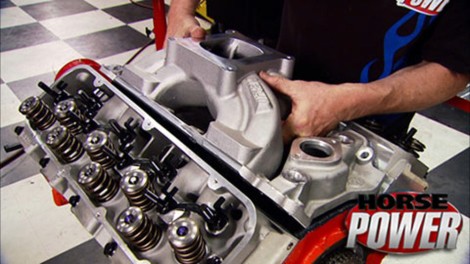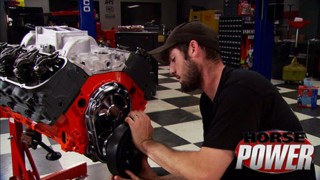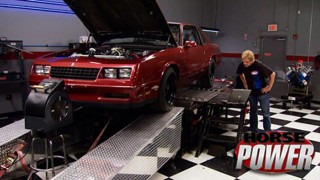More Chevy 454 Big Block Episodes
HorsePower Builds
Want more content like this?
Join the PowerNation Email NewsletterParts Used In This Episode
Cometic Gasket, Inc.
Head gaskets, Intake gaskets, Valve cover gaskets, Timing cover gasket, Water outlet, Water pump, Oil Pan gasket.
Lunati
Street Strip Solid Roller Cam - Chevrolet Big Block Advertised Duration (Int/Exh): 287/295Duration @ .050 (Int/Exh): 256/264Gross Valve Lift (Int/Exh): .660/.660LSA/ICL: 110/104Valve Lash (Int/Exh): .022/.024RPM Range: 3000-7000., Vertical Bar Roller Lifters - BBC +0.300 Qty 16. Full Roller Timing Set w/Torrington - Chevrolet 396-454 9 keyway. Roller Thrust Button.
Racing Head Service
Pro Action 24" Big Block Chevy Cylinder Head; Cast Iron Or Aluminum; Bare Or Fully Assembled; Hydraulic Roller & Mechanical Roller Assemblies Available; Angle Plug.
Bar's Products Inc.
Bar's Leaks Head Gasket Repair.
Design Engineering, Inc. (DEI)
Titanium Wrap with LR Technology, Stainless Steel Locking Ties, HT Silicone Coating.
Huntsville Engine and Performance
align hone block and install new bearings and rings
O'Reilly Auto Parts
Accessory Belt
O'Reilly Auto Parts
Cam Button
O'Reilly Auto Parts
Connecting Rod Bearings, Cam bearings, Main Bearing set
O'Reilly Auto Parts
Castrol GTX 10W-30 (7)
O'Reilly Auto Parts
Castrol GTX (7) 10W30
O'Reilly Auto Parts
Hex Plug (6)
O'Reilly Auto Parts
Header Gasket
O'Reilly Auto Parts
Rear Main Seal, Oil Pan Gasket
O'Reilly Auto Parts
Head Gasket
O'Reilly Auto Parts
Intake Gaskets
O'Reilly Auto Parts
Full Set, Head Gaskets (2)
O'Reilly Auto Parts
Castrol 10W30 (7), Nitrile gloves
O'Reilly Auto Parts
3/16" Roll Pin
O'Reilly Auto Parts
Cam Lock Plate
O'Reilly Auto Parts
3" Exhaust Clamps
O'Reilly Auto Parts
Miscellaneous
O'Reilly Auto Parts
Rear Main Seal
O'Reilly Auto Parts
Chrome Valve Covers
TurnPro
The T-14 is TurnPro's innovative "lightweight" glove, The Magnetic Finger is TurnPro's original patent pending finger glove.
United Engine and Machine Company/Icon Pistons
Closed chamber .290" hollow dome, centered pin forged pistons and file-fit ring set.
































